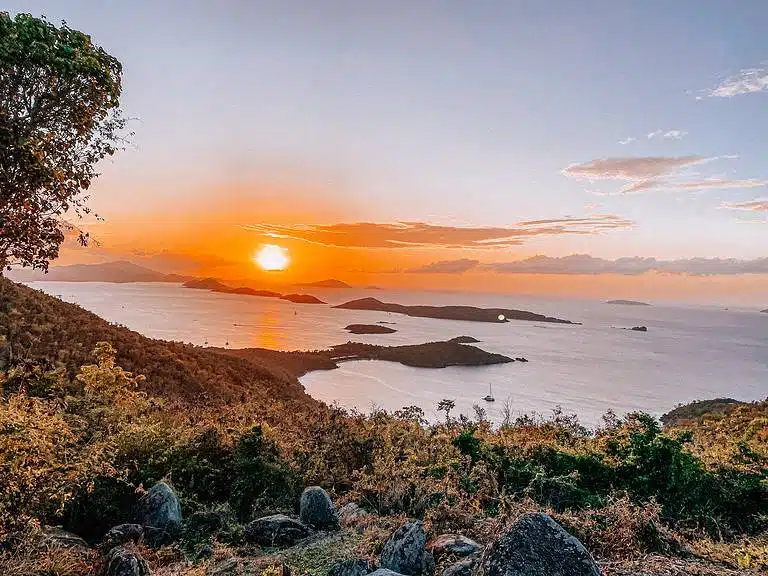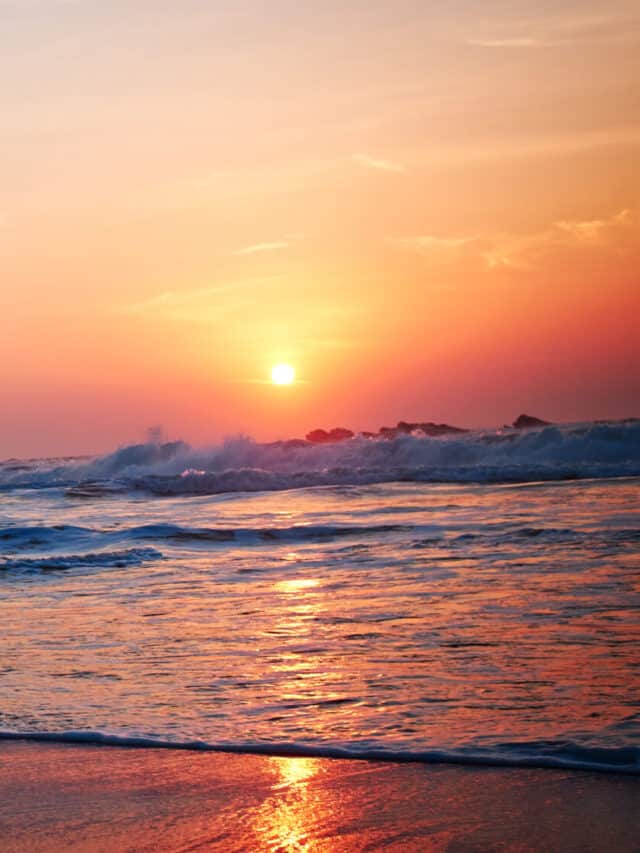Manta Ray Night Snorkel Kona: An Unforgettable Adventure
Embarking on a manta ray night snorkel is an incredible experience, allowing you to witness these gentle giants under the moonlit waters. As you prepare for this unique underwater adventure, knowing about these fascinating creatures and what you can expect is essential.
Manta rays, with their size and friendly nature, are a highlight for snorkelers and divers in congregating areas.
When choosing the best manta ray night snorkel tours, selecting operators prioritizing safety, sustainability, and educational value is important. These tours provide the necessary equipment for an unforgettable experience and guidelines on interacting respectfully with marine life.
Discover the breathtaking world of Manta Rays at locations like the Manta Ray Village, leaving you with memories even after you stow away your snorkel gear.

Affiliate Disclaimer: Some links on this blog are affiliate links. This means that, at no additional cost, the author may earn a small commission if you purchase through these links. As an Amazon Associate, I earn from qualifying purchases.
Planning Your Adventure
When selecting a tour operator or private charter for your snorkeling adventure, look for great service and knowledgeable guides. The right crew can make a difference, offering in-water guide assistance and information about ocean conditions. Choosing an operator that provides a comprehensive briefing on the experience is important.
Choosing the Best Time
Best Time to Go: The best time to snorkel with the manta rays is typically at dusk and into the night when these creatures come to feed on plankton. The ideal time for this activity often extends to late at night.
Go during the calm sea for clearer views & more manta ray sightings. Some tours start around 9 PM, aligning with the manta rays’ nocturnal feeding habits.
- Ideal Time: Late Night, around 9 PM
- Success Rate: Higher with calm seas
Choose the time that best fits your schedule and comfort, but remember that late evenings are usually the most rewarding times to witness the manta rays in action.
You’ll likely spot manta rays on 80% of tours, and evening outings offer the best sightings. We took three trips; the first evening tour was unsuccessful, but the second evening with the same company rewarded us with rays.
Determined to have an unforgettable experience, we booked a third tour with a different company, and it was spectacular. We went out on the second tour and then immediately on the third. Numerous rays surrounded our raft throughout the trip.
While the second tour was satisfactory, the third, later tour was exceptional, confirming our belief that timing is key for the best encounters. Remember that manta ray sightings are not guaranteed as they are wildlife encounters.
Unlike the Humpback Whales, Manta Rays do not have a season. They are in the Hawaiian waters all year round.
Water Conditions: The water temperature typically ranges from 75°F to 80°F (24°C-27°C), making it comfortable for snorkeling with a standard swimsuit. However, renting or bringing a wetsuit might enhance your comfort if you’re prone to getting cold.

Selecting a Tour Operator for Night Manta Ray Snorkeling
Reputation and Experience
Choose a tour operator with a strong track record for providing safe and respectful wildlife encounters.
Operators like Sea Paradise come highly recommended for their all-around quality experience. Choose a tour company that operates with the safety of manta rays in mind and educates you about them. Hawaii Ocean Watch rates the tour company, so make sure they endorse them.
Tour Options
- Group Tours: It will be a large group tour depending on the size of the boat and how many reservations. We feel a larger tour benefits this activity since you want to attract the manta rays.
- Small Group Tours: If you prefer a more intimate setting, consider a company like Hawaii Oceanic, which specializes in small group tours.
- Private Charters: For a more personalized experience, you can opt for a private charter, such as the Aloha Kona Tours offers.
Success Rate
While no tour can guarantee sightings, look for operators with high success rates. Don’t hesitate to ask for recent customer testimonials or check online reviews to gauge previous guest experiences. Most tour companies will offer a guarantee to see manta rays, or you can rebook for another charter.
For this reason, I highly recommend booking your manta ray tour at the beginning of your trip so you have time to rebook.
Equipment
Different tour companies utilize varying equipment for floating. Our first tour provided pool noodles, while the second offered more comfortable leg floats with a unique setup. Some companies offer wetsuits as part of their tour, while others charge you to rent them.
Understanding Manta Rays
When you embark on a manta ray night snorkel in Kona, you’re entering the world of one of the ocean’s gentle giants. These creatures are not only majestic but also important for the marine ecosystem.
Behavior and Habitat
Manta rays are spectacular filter feeders, traversing the ocean and funneling plankton into their wide-open mouths. Their size is awe-inspiring; mantas can span up to 29 feet across! Unlike other wild animals in the sea, they are known for their intelligence and curiosity, often approaching divers in the water.
These gentle giants of the sea have a unique spot pattern on their bellies, serving as a fingerprint to identify individuals, a fact that manta ray advocates and researchers, like those at the Manta Pacific Research Foundation, use to track their populations.
Conservation Efforts
Unfortunately, these majestic creatures face threats from fishing and habitat destruction, which has led to their inclusion on the International Union for Conservation of Nature (IUCN) Red List of Threatened Species.
They fall into the vulnerable category, meaning they are at high risk of facing endangerment in the wild. Educating yourself and others about manta rays supports the global effort to protect these remarkable animals.
The well-being of manta rays is a focus of several organizations, including the Manta Pacific Research Foundation, which aims to protect marine life through research, education, and conservation. It’s critical to approach this experience concerning the manta rays’ natural habitat.
By participating in conservation-minded tours, you contribute to the efforts that ensure the safety and preservation of these magnificent creatures for future generations to witness. Remember, while large and impressive, manta rays are harmless to humans and critical contributors to the ocean’s health.
Manta Rays vs. Sting Rays
While they may seem similar initially, manta and sting rays differ. One of the most notable differences is the absence of a stinger on manta rays.
Additionally, manta rays are generally much larger than sting rays and occupy different habitats. Sting rays often bury themselves in sandy ocean floors, while manta rays glide through open waters.
Your awareness of these differences helps distinguish these intriguing animals accurately.

Where to see Manta Rays on the Big Island
Manta Ray Village
Manta Ray Village, aka Kaukalaelae Point, located near the Outrigger Kona Resort & Spa (formally Sheraton Kona Resort), is a prime spot where manta rays are known to frequent. The underwater light setup illuminates the water, enhancing your ability to view these gentle giants as they perform their aquatic ballet.
These lights attract the manta rays’ main food source, plankton, making this site a top choice for beginner and experienced snorkelers.
Manta Ray Heaven
Manta Ray Heaven, situated in Makako Bay and known as “Garden Eel Cove,” is considered the best for manta ray viewing experiences. With its deeper open ocean setting, it promises a more exhilarating encounter.
Expert guides from operators such as Big Island Divers ensure optimal positioning for maximum viewing. Although the depth and currents present a challenge, they contribute to the likelihood of witnessing more mantas in their natural habitat.
Divers utilize this site more frequently. They place their light source in a way that resembles a campfire to attract plankton and, therefore, manta rays.
Manta Ray Point
Manta Ray Point at Kauna’oa Bay, nestled along the pristine Kohala Coast, offers a unique and exclusive manta ray viewing experience due to its location on private property. This seclusion means motorized boats cannot access the area, ensuring a tranquil environment for the mantas and visitors.
The restriction on boat traffic protects the natural habitat of these majestic creatures. It provides a serene setting for those fortunate enough to observe the mantas in such an intimate and undisturbed location.

Preparing for the Snorkel at Night
Before you embark on a mesmerizing underwater adventure to swim with manta rays off the coast of Kona, ensuring you’re well-prepared is key. From the right gear to essential safety protocols, a little preparation will help you make the most of this unforgettable experience.
What to Bring
- Motion sickness medication
- Wear a Swimsuit
- Go Pro or Underwater camera
- Towel
- Coverup or a jacket (it will be cold when you get out of the water)
- Change of clothing
- Dry bag
- Dive Certification Card if you are diving
What will probably be supplied by your tour company, but I recommend you check ahead. If you own equipment, you will probably want to use it.
- Snorkel Gear: A high-quality snorkel, mask, and fins are crucial for a comfortable experience. Ensure your mask fits snugly to avoid water leakage.
- Wet Suit: The ocean can be chilly at night, so a wet suit is recommended. It provides warmth and buoyancy, enhancing comfort and safety.
- Flotation Devices: If you’re not a strong swimmer, consider wearing a flotation belt or vest for additional support in the water.
Safety Measures
- Knowledgeable Guides: Always go with knowledgeable guides who understand ocean conditions and can provide clear instructions and assistance.
- Ocean Conditions: Stay informed about the water conditions, currents, and weather forecast for the night of your snorkel to ensure a safe outing.
- Mind the Mantas: While manta rays are harmless, respecting their space and avoiding touching or disrupting their natural behavior is important.
By taking these preparations to heart, you’re set to have a breathtaking snorkel with the manta rays under the Kona night sky.

During the Snorkel Experience with Manta Rays
As you watch the waters off Kona at night, you’ll marvel at the balletic movements of manta rays illuminated by the light beam. It’s an underwater dance you’re unlikely to forget.
Encountering Manta Rays
You’ll likely encounter reef manta rays when you’re in the water. With wingspans reaching over 12 feet, these gentle giants soar through the ocean, often performing graceful acrobatics.
The cephalic fins on either side of a manta ray’s wide mouth help to channel plankton, their primary food source, into their mouths. Remember to stay still and calm; your light will attract the plankton, and the manta rays will follow, swooping and spiraling just inches away.
Respecting Wildlife
It’s essential to respect these creatures as you interact with them. Maintain a respectful distance and resist the urge to touch them.
Manta rays have a protective mucous coating on their skin that can be damaged by human contact. Moreover, ensure you don’t disturb the ocean floor while enjoying your Manta Ray Dive. Your participation in this activity should leave no trace behind, ensuring that the manta rays continue to thrive in their natural habitat.
What to Expect While Snorkeling at Night with Manta Rays
Anticipate an amazing encounter, but be aware that ocean conditions can vary. The crew members will guide you through proper interaction with the marine life to ensure a safe and respectful experience.
Bright lights used by the tour will create an otherworldly view as manta rays gracefully glide below you. Remember, mantas are wild animals, and sightings are likely but not guaranteed.
Interacting with Mantas
- Stay still: Manta rays are attracted to the bright dive lights, which illuminate plankton, their primary food source. Avoid sudden movements; let them approach you.
- Mind the fins: Be aware of the manta rays’ cephalic fins used for feeding. Avoid obstructing or touching their path, as this can disrupt their natural behavior.
Responsible Snorkeling
- Prepare for the conditions: Always check weather forecasts and avoid snorkeling in inclement weather, making the sea rough and dangerous.
- Respect the ocean: Avoid touching coral reefs and stirring up the ocean floor, as this can damage the ecosystem and reduce visibility.
- Stay informed about the snorkeling site’s rules to protect you and the local marine life.
Final Thoughts on Manta Ray Night Snorkel in Kona
- Engaging in a Manta Ray Night Snorkel is a one-of-a-kind experience in the Hawaiian Islands.
- Proper preparation enhances your nighttime snorkeling adventure.
- Observing manta rays in their natural habitat at night creates an unforgettable memory.
Add the unforgettable night snorkeling with manta rays to your Big Island itinerary. This mesmerizing encounter is a must-do, an extraordinary adventure that deserves a spot on your travel bucket list.
Frequently Asked Questions
In this section, you will find answers to some of the most common questions about the manta ray night snorkel experience in Kona, which will help you prepare for this unique adventure.
Manta Ray Night Snorkeling
Additionally, during a manta ray night snorkel in Kona, you’ll likely be in the water at dusk or after dark, surrounded by the sea’s gentle giants. Manta rays are attracted to the lights provided by the tour operators, which in turn attract plankton, the manta rays’ primary food source.
To choose the best company for this experience, look for reputable operators, emphasize safety, and have knowledgeable guides. Make sure they have good reviews and practice ethical wildlife interactions.
Select operators dedicated to conservation practices, such as refraining from touching or feeding the manta rays while minimizing light pollution and environmental impact.
Safety considerations include using a reputable tour operator, following all provided instructions, and using the right snorkeling gear. It’s important to stay calm and avoid touching the manta rays, as they are wild animals.
While seeing manta rays without a tour is possible, it is not recommended due to safety and ethical considerations. Tours ensure you see manta rays safely and respectfully, and they contribute to the local economy.
Manta rays can be seen year-round in Kona.
The Big Island’s Kona coast is uniquely suited for manta ray snorkel tours because of its calm waters and high concentration of plankton, which attracts manta rays more consistently than other locations in Hawaii.
Our Trusted Resources
Booking.com: for booking accommodations
Fare Drop: for finding the best airfare deals.
Viator or Get Your Guide: for all my activities
Discover Cars: for car rentals
Airalo: for eSIM card
Trainline: for booking train tickets
Vuori & prAna: great sources for travel clothes
Columbia: great clothes and accessories for outdoor adventures.
International Drivers Permit: for getting your IDP







How very majestic and scary to me at the same time! Wonderful information and what looks like a fantastic time! Thank you for sharing!! http://Www.jnjbackcountry.com
It many seem scary, but believe me, it is amazing. Once in the water, it is so calm as they move around. Plus the water is all lit up to attract them, which takes some of the scariness out of being in the water at night.
Great post! This post isn’t just about describing the wonder of manta ray night snorkeling and how to get the most out of it, but it’s also showing how majestic manta rays are, why they need protection, and how we can prevent ourselves from disturbing them or their environment when we go on the tours. Love it!
Seeing your photos reminded me of my trip to Kona in 2022 where my husband and I ate at Manta restaurant in the Mauna Kea Resort. After dinner, we walked down towards the ocean and watched as people swam with manta rays at night. The lights were bright and the manta rays were huge! It was awesome as a spectator. I can only imagine how exciting it is to be in the water with huge manta rays.
I swam with wild manta rays in Micronesia. It was incredible but also a bit scary at first – they’re so big!! I’d love to do it again though. It sounds like Hawaii would be the perfect place to go!
That’ll be such an amazing experience. They glide so effortlessly through the water.